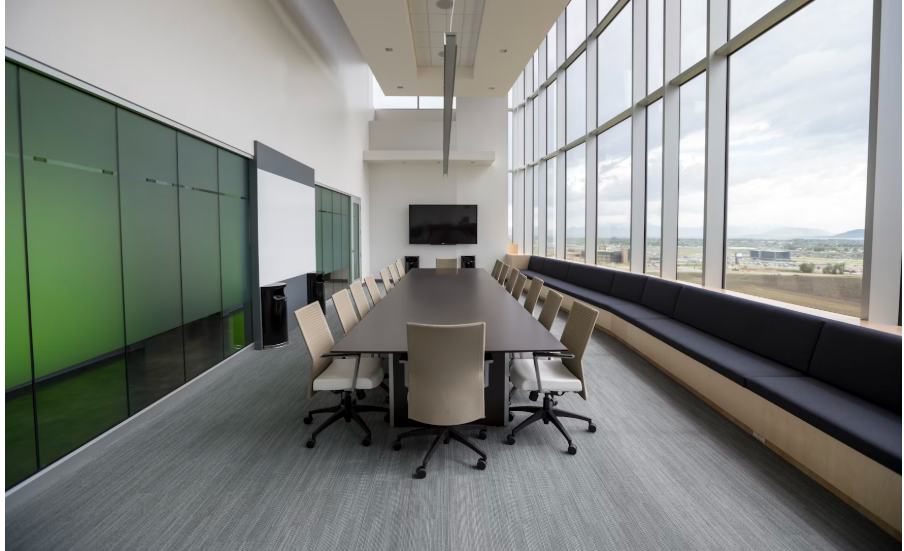In the field of strategic planning and forecasting, the concept of backtracking serves as a powerful methodology. Casting Room? Backtracking allows organizations to anticipate and work toward a desired future state by starting from that future and working backward to determine the steps needed to achieve it. In this comprehensive guide, we take a detailed look at what backtracking rooms are, their historical roots, principles, processes, applications, benefits, challenges, case studies, and future outlook.
Definition of Backtracking
In essence, backtracking is a strategic planning technique that starts with a vision of the future and works backward to determine the steps needed to achieve that vision. Unlike traditional forecasting, which relies on historical data to predict future trends, backtracking focuses on identifying a desired future state and charting a path to get there.
Historical Background
The origins of backtracking can be traced back to the fields of operations research and systems thinking in the mid-20th century. Pioneers such as John B. Casting Room? Robinson and Dennis Meadows laid the foundation for the retrospective analysis methodology through their work on dynamic systems modeling and scenario planning.
The Principle of Retrospective Analysis
Vision of the Future
The core of a retrospective analysis is to create a clear and compelling vision of the desired future state. This vision will guide the planning process.Casting Room?
Building a Scenario
Once a vision of the future has been formed, the next step is to develop alternative scenarios or ways to make this vision a reality. These scenarios help to explore different potential futures and identify the most viable ones.
Determining the Path
Once the scenarios have been identified, the focus turns to identifying the specific paths or strategies needed to move from the current state to the desired future state. This involves analyzing the gaps between the present and the future and identifying the actions needed to close them.
The Retrospective Analysis Process
Setting Goals
The retrospective analysis process begins with setting clear and measurable objectives for the desired future state. These objectives provide specific guidelines for your planning efforts.
Analyzing the Current Situation
Next, we conduct a thorough analysis of the current situation to understand the existing problems, opportunities, and constraints. This analysis helps to identify gaps between your current situation and your vision of the future.
Design Strategy
Based on the analysis, strategies and action plans are developed to close gaps and get closer to the desired future state. These strategies include policy changes, technology investments, organizational restructuring, stakeholder engagement, and more.
The Principle of Retrospective Analysis
Vision of the Future
The core of a retrospective analysis is to create a clear and compelling vision of the desired future state. This vision will guide the planning process.
Building a Scenario
Once a vision of the future has been formed, the next step is to develop alternative scenarios or ways to make this vision a reality. These scenarios help to explore different potential futures and identify the most viable ones.
Determining the Path
Once the scenario is defined, the focus shifts to identifying the specific paths or strategies needed to move from the current state to the desired future state. This involves analyzing gaps between the present and the future and identifying actions needed to close them.
The What is a Back Casting Room? A Comprehensive Guide
Process
Setting Goals
The What is a Back Casting Room? A Comprehensive Guide
process begins with setting clear, measurable goals for the desired future state. These goals provide a specific target for your planning efforts.
Current Situation Analysis
Next, a thorough analysis of the current situation is conducted to understand existing problems, opportunities, and constraints. This analysis helps identify gaps between your current state and your vision of the future.
Design Strategy
Based on the analysis, strategies and action plans are developed to close gaps and move closer to the desired future state. These strategies include policy changes, technology investments, organizational restructuring, stakeholder engagement, and more.
Implementation and Monitoring
Once strategies have been developed, they are implemented and their progress is closely monitored. Feedback mechanisms will be established to monitor progress, identify deviations from the plan, and make adjustments as necessary.
Applications of Back Casting Room?
Urban Planning
In urban planning, What is a Back Casting Room? A Comprehensive Guide
is used to develop long-term concepts for sustainable urban development. Starting from a vision of the desired future urban environment, planners can work backwards to identify the policies, investments, and interventions needed to make that vision a reality.
Environmental Management
What is a Back Casting Room? A Comprehensive Guide
is also widely used in environmental management to address complex sustainability issues. By imagining a future where ecosystems are healthy and resilient, organizations can develop strategies to mitigate climate change, protect biodiversity, and promote sustainable use of resources.
Business Strategy
In the business world, Back Casting Room? is used to develop sound long-term strategies. With a clear understanding of future market trends, customer needs, and competitive dynamics, companies can develop strategies to adapt and succeed in an ever-changing business environment.
Benefits of Retrospective Analysis
Retrospective analysis offers several key benefits for organizations and decision makers:
Improved strategic planning: A clear view of the future enables organizations to develop more focused and coherent strategic plans.
Minimizing risk and uncertainty: By considering alternative scenarios and identifying potential obstacles, organizations can better anticipate and mitigate risks.
Improved decision-making processes: Retrospective research provides a structured basis for decision making, allowing organizations to make more informed and timely decisions.
Problems with retrospective analysis
While retrospective analysis has its advantages, it also creates some problems.
Data limitations: Retrospection relies on accurate and reliable data to inform the planning process. However, data availability and quality can be a major challenge, especially in complex and uncertain environments.
Uncertain future scenarios: The future is inherently uncertain, and retrospective foresight requires planners to make assumptions and predictions about future trends and events. Overcoming this uncertainty is challenging and requires careful consideration of many factors.
Resistance to change: Implementing strategies identified through retrospective analysis often requires significant changes to existing systems, structures, and practices. Resistance to change by stakeholders can hinder successful implementation.
Case study
To illustrate the practical application of retrospective vision, let’s look at some real-world examples.
Example 1: Sustainable urban planning. The City of Copenhagen used back-analysis to develop a long-term strategy to achieve net-zero carbon emissions by 2025. Building on this ambitious goal, the city has identified a number of initiatives, including investments in renewable energy, green infrastructure, and sustainable transport.
Example 2: Corporate Sustainability Strategy. Unilever used back-office analysis to develop a sustainability plan aimed at doubling the scale of its operations and reducing its environmental impact. Building on a vision of a sustainable future, Unilever identified opportunities to innovate products, reduce waste, and engage with stakeholders.
Future Outlook
Looking ahead, back-analysis offers great potential for further innovation and improvement. Advances in technology, data analytics, and collaborative planning processes can make back-analysis methods more effective and accessible.
Conclusion
In conclusion, it should be noted that back-analysis is a valuable tool for strategic planning and forecasting, allowing organizations to anticipate and work toward a desired future state. Casting Room? By starting with a clear vision of the future and working backward to determine the path forward, retrospectives can help organizations overcome uncertainty, reduce risk, and make informed decisions.





